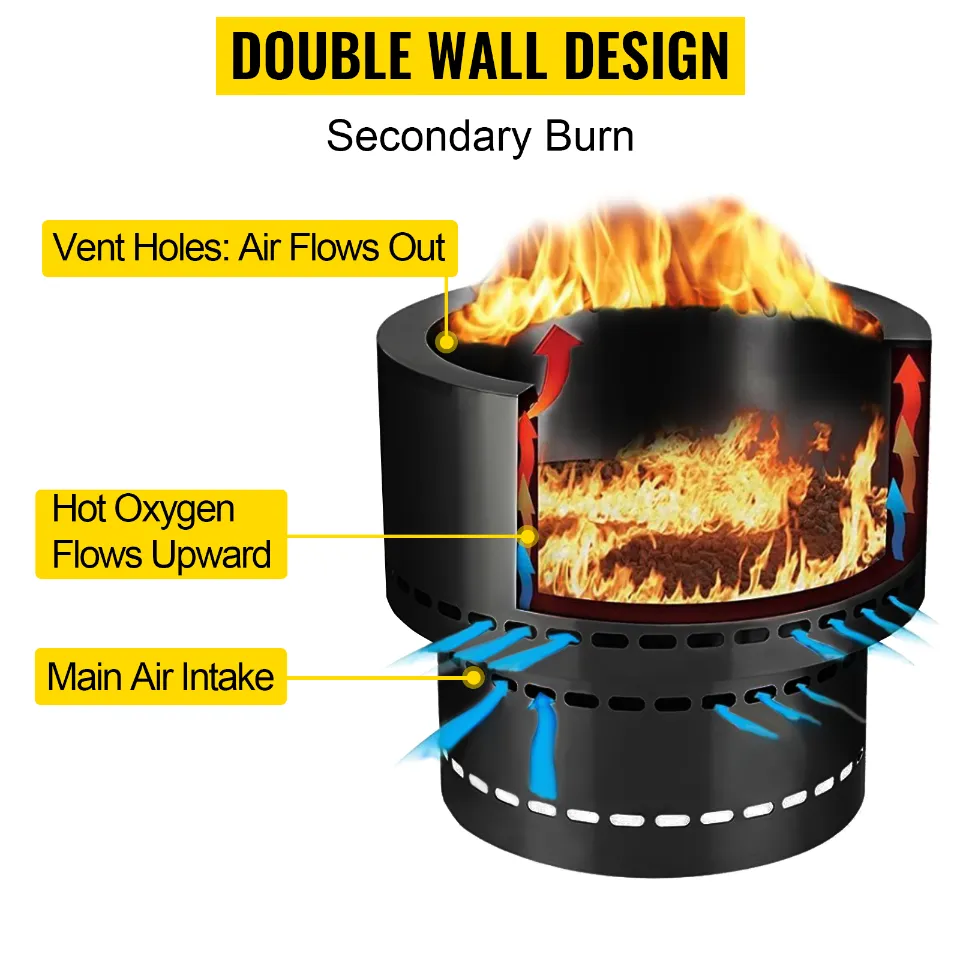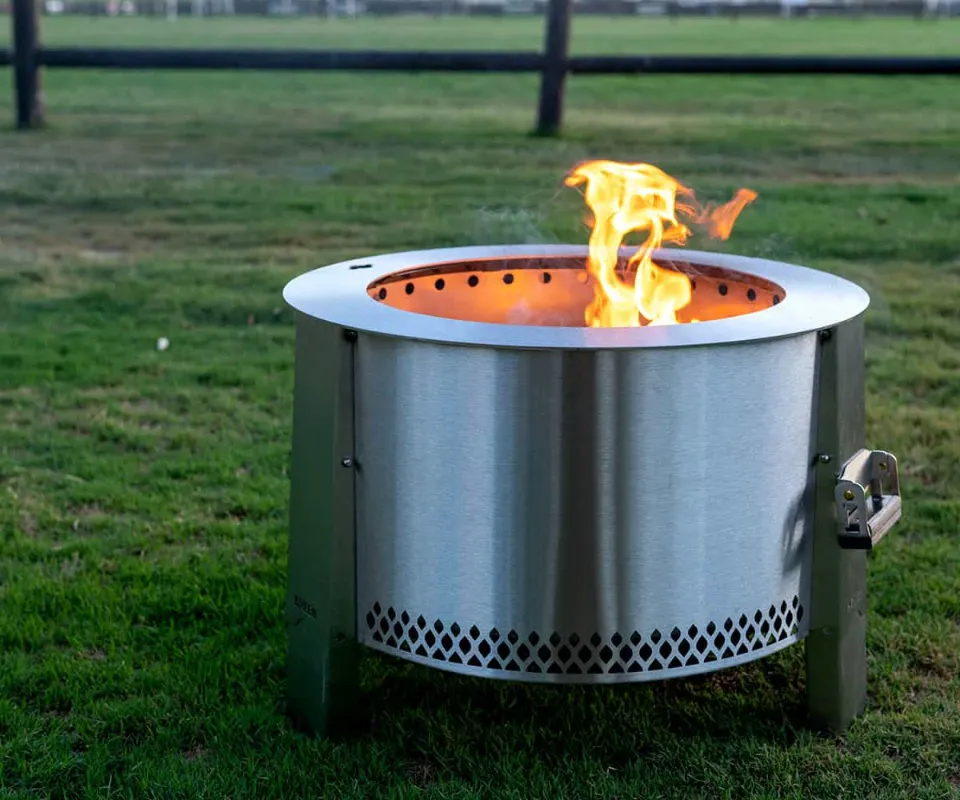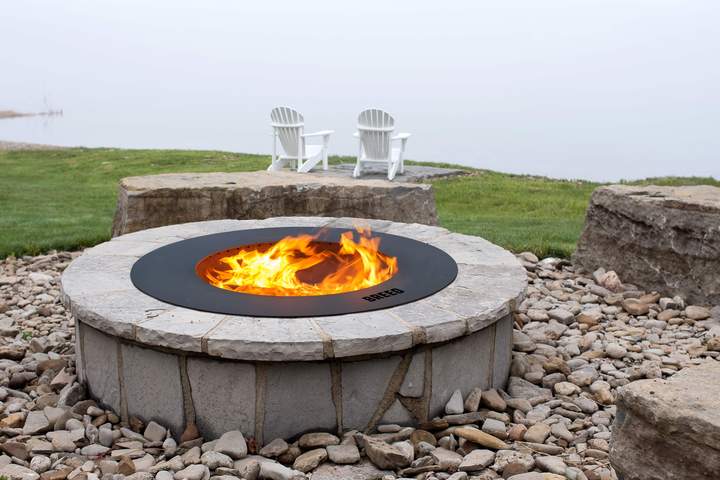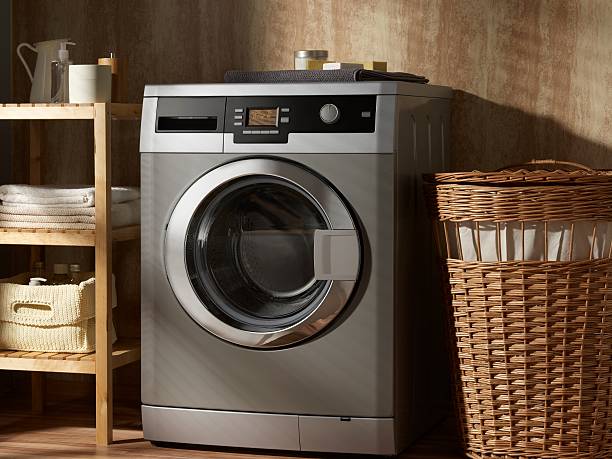A smokeless fire pit might sound contradictory. While it’s true that there can’t be fire without smoke, using a smokeless fire pit will allow you to significantly reduce the amount of smoke your fire pit produces.
Traditional wood-burning fire pits produce more smoke, which makes for a less enjoyable experience. Smokeless fire pits produce less smoke, which makes for a more pleasant experience. This blog post will examine the advantages of smokeless fire pits and how they operate in more detail.
Table of Contents
What is a Smokeless Fire Pit?
You’re not alone if you’ve ever been huddled around a conventional fire pit only to be pursued by the smoke no matter where you go. Smokeless fire pits were created for this purpose.
A wood-burning fire pit that burns wood so effectively that very little smoke is produced is known as a smokeless fire pit. When wood is burned at a temperature that is insufficient to ignite and combust, as would occur in a traditional fire pit, smoke is produced. The best smokeless fire pit encourages complete combustion in the burn chamber, producing little smoke instead.
How Does a Smokeless Fire Pit Work?
The three components that a fire needs to burn hot are oxygen, heat, and fuel. These three components are all present in a smokeless backyard fire pit. A smokeless fire pit works by maintaining a hot flame so that the fuel (firewood) inside can burn as hot as possible to produce the least amount of smoke.
The design of a smokeless fire pit determines its effectiveness. The design, which keeps the fire hot, is what makes a smokeless fire pit smokeless.
The two walls of a smokeless fire pit are used to generate heat and oxygen, which are two of the key elements that a fire requires to burn hotly.
Vent holes will be present in the fire pit’s inner and outer walls. In order to keep the fire as hot as possible, these vent holes will draw in oxygen and allow hot air to escape between the two walls of the smokeless pit. The fire pit is smokeless thanks to this airflow, which maintains a hot flame and emits the least amount of smoke possible.

Does a Smokeless Fire Pit Produce No Smoke?
Since fire always precedes smoke, fire always precedes smoke. It’s not that a smokeless fire pit doesn’t produce any smoke; rather, it only does so very sparingly.
Because there won’t be much smoke, you won’t even notice it, which is why it’s called smokeless.
Why You Should Choose a Smokeless Fire Pit?
For entertaining, a smokeless fire pit is fantastic because it prevents your guests from having to outrun the smoke that is produced by a regular fire pit. If you use a smokeless fire pit, your guests will be more content and stay around the fire pit longer.
Using a smokeless fire pit for cooking is also an option. For this reason, some smokeless fire pits have a grill grate. You can use any typical cooking grate on top of a smokeless fire pit if it doesn’t come with a grill. Simply remember to adjust the cooking time due to the high heat. Due to how hot the fire is, your food will cook quickly.
Use cooking skewers to roast hot dogs and marshmallows over the open flame of the smokeless fire pit for more conventional cooking. Due to the high heat, they cook more quickly, so just keep an eye on them as you cook.
Do Smokeless Fire Pits Provide More Heat Than Standard Fire Pits?
While it is true that smokeless fire pits burn wood at a higher temperature than conventional fire pits, this does not necessarily imply that the heat produced or the temperature maintained will be higher. The smokeless fire pit design maintains a hot fire and replenishes it as necessary by bringing oxygen through the bottom and out the top. The fire pit produces a lot of heat, but it mostly radiates upward.
You’ll probably be disappointed with the output from a smokeless fire pit if your motivation for purchasing one is to get more heat. Instead, invest in a smokeless fire pit whose primary function is to drastically cut down the amount of firewood smoke so that it is barely perceptible. This is the reason why people prefer smokeless fire pits to conventional ones.

Are Smokeless Fire Pits Safe?
Keep objects and overhangs far from a fire pit, as we mentioned in our guide to installing a fire pit safely on your deck, but this is particularly crucial when using a smokeless fire pit.
On a smokeless fire pit as opposed to a regular fire pit, the flames rise much higher due to how hot the fire burns. Additionally, items that are directly over the fire are heated by the fire.
Smokeless fire pits are secure, but make sure that there is nothing that could catch fire from the fire below, such as trees, overhangs, or any ceiling or roof structure, above the smokeless fire pit.
The Benefits of Using a Smokeless Fire Pit
Using a smokeless fire pit has lots of advantages. In addition to reducing the amount of smoke produced, smokeless fire pits also:
• Produce less ash and debris
• Are more efficient (use less wood)
• Are easy to use
• Require less maintenance
• Require less cleaning due to reduced ash
• Keep clothes from reeking of smoke
• Keep your backyard safer with reduced embers
• Reduce the burning eyes and scratchy throats of those sensitive to smoke
• Be used for cooking with an optional cooking grate
A smokeless fire pit is a way to go if you want a more enjoyable fire pit experience. Smokeless fire pits are a great option for anyone looking to enjoy the sights and sounds of a campfire without all the smoke because they produce less smoke, produce less ash and debris, and have many other advantages.
Summary
With the heat and ambiance of an outdoor fire without any smoke, ash, or soot, you can enjoy it in a smokeless fire pit in your backyard or on your patio. Smokeless fire pits function similarly to standard gas fire pits, and wood and wood pellet stoves, with one important exception: they are made to catch all smoke before it can escape into the atmosphere.




